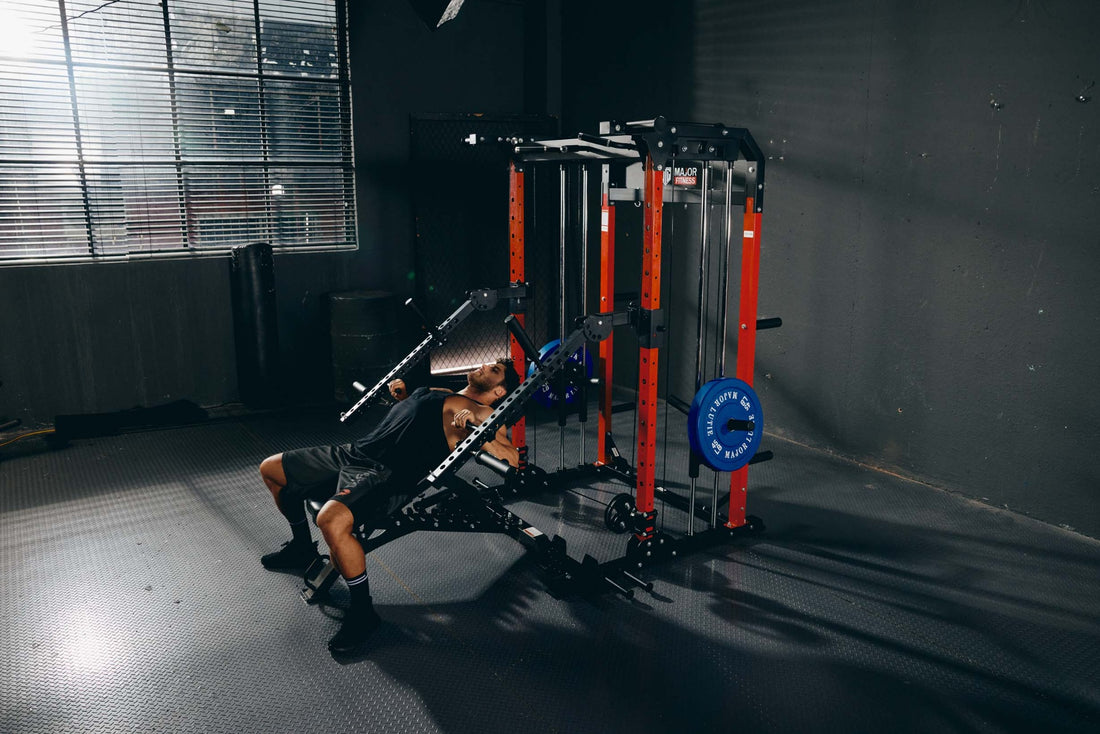
Incline Bench Press vs Flat Bench Press: Have you ever wondered which is superior for building chest muscles? This eternal gym debate has perplexed bodybuilders and fitness enthusiasts for years. Unlock the secrets behind the incline and flat bench presses to turbocharge your workout and maximize muscle gain. Ready to transform your training? Let’s delve into the pros and cons of these fundamental exercises.
The Basics: Understanding the Bench Press Variations
The bench press is a cornerstone exercise in strength training that primarily targets the pectoral muscles, triceps, and deltoids. It comes in multiple variations, with the most common being the flat bench press and the incline bench press.
Flat Bench Press
The flat bench press is performed on a horizontal bench. The lifter lies flat, lifts the barbell off the rack, and lowers it to the chest before pressing it back up. This variation is renowned for its ability to build overall chest strength and mass.
Incline Bench Press
On the other hand, the incline bench press is executed at an angle, typically set between 30 to 45 degrees. This angle shifts the emphasis from the lower pectorals to the upper chest and shoulders. It's the go-to exercise for those looking to sculpt their upper chest and improve balance among their pectoral muscles.
Key Differences: Incline vs Flat Bench Press
While both the incline and flat bench presses target the pectorals, their distinct angles and technique nuances lead to different muscle activation patterns.
Muscle Activation
The flat bench press targets the middle and lower portions of the pectoral muscles. It also offers a balanced engagement of the triceps and shoulders, making it a comprehensive upper body exercise. Conversely, the incline bench press shifts the focus towards the upper pectorals and anterior deltoids, making it effective for upper chest development. Enhanced muscle activation in these areas can help create a fuller and more defined chest.
Range of Motion
The range of motion (ROM) differs significantly between the two exercises. The flat bench press has a shorter ROM, which allows you to lift heavier weights but may limit muscle fiber activation. The incline bench press, with its extended ROM, provides a greater stretch on the pectoral fibers, potentially leading to more muscle hypertrophy over time.
Form and Dynamics
Maintaining proper form is crucial in both exercises to avoid injury and maximize muscle engagement. The flat bench press generally demands a stable core and shoulder retraction to protect the rotator cuffs. Meanwhile, the incline bench press requires an added focus on stabilizing shoulders due to the increased range of motion, making it slightly more complex to perform correctly.
Benefits and Drawbacks
Each bench press variation comes with its own set of advantages and limitations.
Flat Bench Press
Benefits:
- Comprehensive upper body workout
- Simpler to perform, making it ideal for beginners
- Allows lifting heavier weights
Drawbacks:
- Limited activation of the upper chest
- Greater risk of shoulder injuries if not performed correctly
Incline Bench Press
Benefits:
- Targets upper pectorals and shoulders more effectively
- Promotes balanced chest development
- Reduced strain on the lower back
Drawbacks:
- Typically involves lifting lighter weights
- More challenging to maintain proper form

Optimal Integration into Your Routine
Choosing between the incline and flat bench press doesn't have to be an either-or decision. Both exercises can co-exist in your strength training regimen to provide balanced muscle development and strength gains.
Frequency
Incorporate both variations into your workout routine. For example, dedicate one day to the flat bench press and another to the incline bench press. This will allow you to target different muscle groups effectively while giving each enough time for recovery.
Volume and Intensity
Adjusting the volume and intensity based on your fitness goals is crucial. Heavier weights and lower repetitions are suitable for muscle strength, while lighter weights with higher repetitions focus on muscle endurance and hypertrophy.
Real-World Applications and Expert Tips
Top fitness trainers often emphasize the significance of both bench press variations. Here are some expert tips to help you get the most out of your workouts:
- Warm-up: Always perform a thorough warm-up to prepare your muscles and joints, reducing the risk of injury.
- Progressive Overload: Gradually increase the weight to challenge your muscles and encourage growth.
- Variation: Switch up the angle of incline (15, 30, and 45 degrees) to continuously challenge your upper chest.
- Focus on Form: Proper technique is critical. Engage your core, retract your shoulder blades, and avoid overreaching with your wrists.
By integrating these practices, you can ensure a balanced and effective workout routine that targets all areas of your chest.
Final Thoughts
Whether you’re looking to build a Herculean chest or simply improve upper body strength, understanding the distinct benefits of the incline bench press versus the flat bench press is vital. Both exercises offer unique advantages, and incorporating them into your fitness regimen can lead to well-rounded muscle development and impressive gains. Ready to elevate your training game? Try adding both bench press variations to your workout and watch how your chest transforms.



















